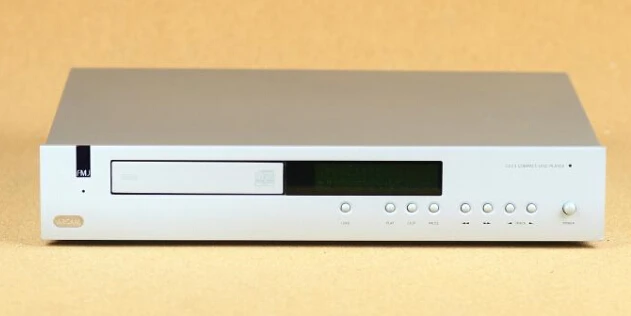Arcam hi-fi separates have always been geared at the mass market, but they’ve frequently turned out to be a little odd. Always well-engineered, the company frequently tries bold engineering techniques, sometimes with tremendous success — as evidenced by this high-end CD player introduced at the turn of the century. The FMJ CD23 was a development of the Alpha 9, which was noteworthy for being the first inexpensive version of the Ring DAC. It used unique technology licenced from dCS.
When properly calibrated, multibit converters operate effectively, although they rely heavily on the tolerances of their resistor networks as well as glitch-free electronic switching. Time and temperature drift, however, wreak havoc on them, resulting in severe distortion and poor noise modulation capability. Bitstream avoids this, but at the cost of a low signal-to-noise ratio that can only be compensated for by significant oversampling and noise shaping. In-band idle tones and sound-degrading timing faults are caused by problems here.
The Ring DAC avoided such difficulties by employing technology created by dCS (Data Conversion Systems) and used in subsequent versions of the Harrier jump jet, which was based on extensive military research on aircraft radar. It operates by continually altering the number and positions of the selected current sources from sample to sample, as if in a circle, combining multibit and Delta Sigma technology. This ensures that the current sources’ unavoidable minor changes are scattered randomly across the quantising range, essentially turning tolerance mistakes into random white noise rather than distortion. As a result, there’s a lot of linearity and extremely little noise and distortion.
The CD23 was a deluxe version of the Alpha 9 with a redesigned motherboard, increased vibration damping, a reworked power supply, and an elegantly finished metal shell and front panel to go with the Pacific Microsonics HDCD digital filter, low jitter Sony CDM14 transport, and high precision analogue stages. The control buttons and packaging were also improved, giving the device a high-end appearance. The end result was a sophisticated device that looked and felt a cut above the Alpha 9’s plasticky appearance.
It was a delightfully simple player to operate, ergonomically pleasing, and completely hassle-free. Apart from the typical programming features, it only included a’scan’ feature (which played the first ten seconds of each track in order) and a’space’ feature (which added four seconds between each track) (for the benefit of cassette deck music search systems). That was your lot, along with a handy display dimmer and coaxial and optical digital outs around the rear.
By today’s standards, the sound was amazingly sophisticated yet musically appealing, communicating scintillating harmonics in all their brilliance. The middle section was tight, the bass was supple and tuneful, and the hi-hats were lovely and booming. The Arcam’s ability to create a cathedral-like acoustic around the speakers, with outstanding depth perspective and finely defined stereo pictures, was most astonishing. It has most of the benefits of multibit but none of the jitter. It featured a lovely even-handed tonality with a tinge of warmth, a super-fluid bass that bounced like a new rubber ball, and pleasant, expansive treble.
If you ask dCS what they thought of the CD23’s Ring DAC implementation, they’ll tell you it’s “a touch noisy,” but that’s coming from a business that sells DACs for twenty times the price. Arcam said that its FMJ CD23 was one of the greatest one-box players available at the time, and they weren’t far off. It cost £1,100 new in 2000 and is now a few hundred pounds in decent used condition, making it excellent value for money for audiophiles on a budget.






